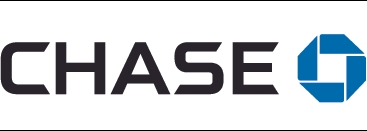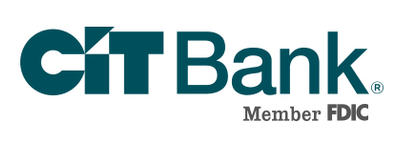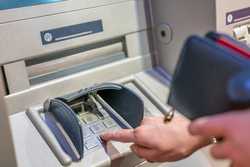Best Joint Checking Accounts for October 2024

Our evaluations and opinions are not influenced by our advertising relationships, but we may earn a commission from our partners’ links. This content is created by TIME Stamped, under TIME’s direction and produced in accordance with TIME’s editorial guidelines and overseen by TIME’s editorial staff. Learn more about it.
A joint checking account offers many benefits—most notably, the ability for two people to pay for shared expenses from one account rather than from separate accounts. For many couples, opening a joint checking account is a major step in their relationship that shows their trust in each other and their commitment to combining their lives. But with so many options out there, how can you choose the right joint account?
We’ve done the legwork to find the best joint checking accounts for couples, families, businesses, and more. If you’re looking into opening a joint account with a partner, friend, or family member, consider the following choices. Note that many of these accounts are electronic and pay through debit cards and ACH transfers rather than paper checks.
$12 ($0 with qualifying activities); $34 NSF Fee
Looking for a basic checking account for joint expenses? The Chase Total Checking account may fit the bill. This account doesn’t have a lot of bells and whistles, but it’s ideal for those who want a separate joint account for shared expenses with their partner. The monthly maintenance fee is $12, but you can avoid the fee by meeting one of the following criteria:
This account also includes Chase Overdraft Assist, which means you won’t be charged an overdraft fee for being overdrawn by $50 or less. And you will get paper checks.
Upon signing up for an Axos Rewards Checking account, you’ll receive a $500 welcome bonus with code RC500. To receive this bonus, you’ll have to meet the following requirements:
Another notable benefit of opening a joint Axos Rewards Checking account is the ability to build your own APY with up to 3.30% annual percentage yield (APY). Additionally, Axos imposes no monthly maintenance fees and no overdraft fees, and provides unlimited domestic ATM fee reimbursements. There’s no minimum monthly balance requirement (except to receive the bonus), but you must have at least $50 to open an account.
Up to 4.69%
If you want to earn the highest return on your money, the Upgrade Rewards Checking Plus account is worth consideration. Upgrade provides rewards for spending with your Visa debit card—2% cash back on eligible spending up to $500 per year, then 1%. And with direct deposit you can be paid two days early2.
Once you have opened the account, you’re eligible to add a Performance Savings account, which can earn you up to 4.69% APY if you keep your account active and have a monthly direct deposit of at least $1,000; otherwise, your APY will be 1.50%. Upgrade doesn’t have a minimum balance requirement for its joint account holders, nor does it charge fees for monthly maintenance or for transfers between accounts.
As of May 23,2024, Upgrade Rewards Checking Plus customers will have access to fee-free withdrawals at over 55,000 Allpoint ATMs nationwide.
Note that Upgrade is not a bank; it is a technology company offering banking services through Cross River Bank, a member of FDIC, which provides the checking services.
Checking accounts aren’t known for their high APYs—in fact, many checking accounts have a 0% APY, which means you won’t earn interest on your money while it’s in the account. Quontic’s APY on its High Interest Checking account is up to 1.1%, as long as you make at least 10 qualifying purchases Of $10 or more with your debit card every statement cycle.
Quontic also offers a unique benefit—the Quontic Pay Ring. This payment wearable allows you to easily make payments even if you don’t have your debit card on you. The Quontic Pay Ring normally costs $29, but you can get it for free upon opening an account. Quontic doesn’t charge a monthly maintenance fee or overdraft fees, and you only need $100 to open an account.
3.65% on savings account
If you own a business, check out Lili Business Banking for your joint checking account needs. Lili provides every account holder with a Visa business debit card with cash back as well as checks. There are no hidden fees or overdraft fees, which gives you one less thing to worry about. You can also earn up to 4.15% APY on money in your savings account; allocate money to specific buckets, such as estimated taxes; and categorize purchases to keep a closer eye on your business expenses.
Lili is also a technology company, not a bank. Banking services are provided through Choice Financial Group, a member of FDIC. You pay bills through your debit card or an ACH wire transfer.
The CIT eChecking account is designed to help joint owners manage their money easily online or through the Cit app. You can open an eChecking account with as little as $100, and you’ll earn up to 0.25% APY if you can maintain a $25,000 minimum balance. CIT Bank does not charge ATM fees and offers up to $30 reimbursement per month in other bank’s ATM fees. There are also no monthly fees, no overdraft fees, no online transfer fees, and no fees for incoming wire transfers. Cit allows you to connect your account to Zelle, Samsung Pay, and Apple Pay for easier payments online and in person.
The Zeta Joint Account is designed with families in mind. Zeta allows you to use the envelope system to allocate a certain amount of savings toward a certain goal, such as a vacation or a home improvement project. There’s also the ability to save money automatically, making it easier to reach those savings goals and a concierge to help. Soon, Zeta customers will be able to add additional family members to their accounts, which can help parents ease their children into responsible account ownership. You can also earn up to 2.43% APY on your money, though to do so you’ll need to either set up direct deposit or maintain a daily average balance of at least $5,000.
Zeta is also not a bank. Zeta accounts are backed by Piermont Bank. Account holders get two Joint Mastercard debit cards, and a deposit account the partners manage through their smartphones. Payments are done through pre-authorized withdrawals and ACH transfers, as well as paper checks, which you can send directly through Zeta.
| Joint Account | Best for | APY* | Monthly fee | Special offer |
|---|---|---|---|---|
Chase Total Checking® | N/A | $12 ($0 with qualifying activities); $34 NSF Fee | $300* | |
Axos Rewards Checking | Up to 3.30% | $0 | N/A | |
Upgrade Rewards Checking Plus | Debit card purchases | Up to 2% cash back¹ plus up to 5.21% APY with paired savings account | $0 | N/A |
Quontic High Interest Checking | 1.10% | $0 | Free pay ring (otherwise $29) upon account opening | |
Lili Business Checking | Business owners | 3.65% on savings account | $0 to $35 | N/A |
CIT eChecking | 0.25% with a balance of $25,000 or more; 0.10% with a balance of under $25,000 | $0 | N/A | |
Zeta Joint Account | Families | Up to 2.43% | $0 | N/A |
To determine the best joint checking accounts, we first did our research to find which financial institutions offered joint accounts. Once we had narrowed down our list, we did a deep dive into each account, looking for unique offerings and benefits to find those that stood out among the competition. Once we had our finalists, we assigned awards to them based on their strengths.
In order to find the best joint account, it’s important to list your must-haves. Do you specifically want an account with a $0 monthly maintenance fee? Are you concerned about being charged for transferring money between accounts? Do you want to earn the highest APY on your money? Are paper checks a requirement or could you do without them? Determining these requirements with your account co-owner will help you decide which direction to go in.
Once you’ve narrowed down your options, sit down with your co-owner and decide which joint account will best suit your needs. It’s important to be on the same page since the account will belong equally to both of you.
Before opening a joint checking account, consider whether you actually need one. The following are some scenarios where a joint checking account likely makes sense.
(FDIC) or National Credit Union Administration (NCUA) insurance. Since this covers up to $250,000 per account holder, protection for a joint account is $500,000..
Before making any commitments, make sure you trust the account co-owner since they will have equal access to the money in the account. There is a reason why opening an account together is such a huge step for many couples; it requires a whole new level of trust and confidence that the person will be responsible with your joint assets.
There are also tax consequences for joint accounts, so it’s a good idea to speak to a tax professional or financial advisor to make sure you understand everything you’re signing up for.
A joint account is a good option for many people, but that doesn’t mean it makes sense for everyone. The following are some alternatives to look into if you aren’t interested in sharing account ownership with another person.
Some couples prefer to maintain their own checking accounts. In this case, they may want to consider opening a joint account for shared expenses only, and they can deposit money into that account from their individual accounts each month. The money in the joint account can then be used to pay the mortgage or rent, utility bills, weekly grocery shops, and any other shared household expenses. This method can also work well for family or friends who live together and share expenses.
A joint savings account can allow two people to contribute toward a shared expense or goal. For example, two friends may plan to take a long vacation together to see the sights in Europe. Having a shared savings account can help keep both account holders motivated as they’ll see their balance go up faster than they would with an individual account. Other savings goals could include a down payment for a house or car, or a major home renovation project. When opening a savings account, choosing one with a high APY will help your money grow even faster.
Prepaid debit cards could be a good alternative to help pay for joint expenses without committing to a joint account. You can load the exact amount of specific expenses onto the card without worrying that the other account holder will have full access to your finances. If you choose this option, just watch out for any hidden fees.
The FDIC insures up to $250,000 per account holder. So with a joint account, the limit increases to $500,000.
The process for a joint account after an account owner dies varies from bank to bank, so it’s important to check when opening the account. However, in many cases, the account will transfer ownership to the surviving holder, making them the sole owner of the account. Because both names are on the account, this is an easy way for the surviving account holder to avoid going through probate to get control of the money.
To open a joint checking account, you and the account co-owner will need to apply together—either on the phone or online. You’ll both need to provide your names, Social Security numbers, and dates of birth. Once you’ve provided the correct information and your identities have been verified, you’ll be able to fund the account and begin using it for shared expenses.
The money in a joint checking account is owned equally by both account holders. That means you both can deposit and withdraw money as you wish.
The process of closing a joint checking account will depend on the financial institution. Some may require both owners to give permission to close the account, while others may only need permission from one account holder. Depending on the financial institution, you may be able to close the account online or by phone, or you may need to visit a local branch in person.
If you wish to remove yourself as one of the owners of a joint checking account, you can usually do so by contacting the financial institution and asking to be removed. However, if you want to remove the other owner from the account, you’ll probably need to send in a formal request to the financial institution, as well as have the permission of your co-owner.
The information presented here is created by TIME Stamped and overseen by TIME editorial staff. To learn more, see our About Us page.










